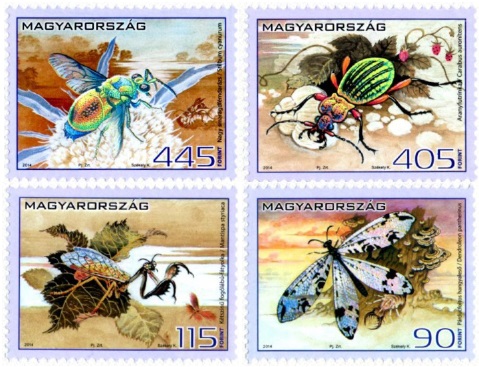Neonicotinoids—the most widely used class of insecticides—significantly reduce populations of predatory insects when used as seed coatings, according to researchers at Penn State. The team's research challenges the previously held belief that neonicotinoid seed coatings have little to no effect on predatory insect populations. In fact, the work suggests that neonicotinoids reduce populations of insect predators as much as broadcast applications of commonly used pyrethroid insecticides.
"Predatory insects contribute billions of dollars a year to agriculture through the elimination of crop pest insects," said Margaret Douglas, postdoctoral researcher in entomology, Penn State. "We have found that neonicotinoid seed coatings reduce populations of these natural enemies 10 to 20 percent."
According to John Tooker, associate professor of entomology, Penn State, the use of neonicotinoids has risen dramatically in recent years, especially for large-acreage crop species like corn, soybeans and cotton. The insecticide is most often applied to seeds as a prophylactic coating. When the seeds are planted, the insecticide enters the soil where some of it is taken up by plant roots. The chemical then runs systemically through the plant, protecting young seedlings from insect pests.
"Applying insecticides to seeds rather than broadcasting them across a field was thought to reduce unwanted effects on natural enemies," said Douglas. "But we found that seeds treated with neonicotinoid insecticides reduced populations of natural enemies by 10 to 20 percent in North American and European farming systems. Surprisingly, this effect was about the same as that associated with broadcast applications of pyrethroids."
The team used a statistical method, called meta-analysis, to combine the results of more than 1,000 observations from 20 field studies across North America and Europe that tested the effects of seed-applied neonicotinoids on predatory insects. "Unfortunately, the available literature is difficult to interpret," said Tooker. "Some studies show little influence of neonicotinoids presented as seed treatments on arthropod predators that are common in crop fields, whereas others show a strong influence of these seed treatments. By using a meta-analysis approach, we were able to combine the results of many studies to quantitatively reveal the overall influence of neonicotinoids on predator populations."
Not only did the researchers find that neonicotinoid seed coatings significantly reduced natural enemy populations, they also found that the insecticide acted more strongly on insect predators than on spiders. In other words, spiders appeared to be less susceptible to neonicotinoids than insects, which is consistent with previous research.
Conclusions of the Penn State study: Using meta-analysis to synthesize the results from field studies in North American and Europe, we found that seed-applied neonicotinoids reduced natural-enemy populations similarly to foliar- or soil-applied pyrethroids. The negative effect of neonicotinoids on natural enemies was d = −0.30 ± 0.10 [95% CI], corresponding to a reduction of ∼16%. The patterns we observed suggest that seed-applied neonicotinoids exert their effects mainly on insect (versus arachnid) natural enemies, at least partly through toxin exposure. If restrictions on neonicotinoid use encourage substitution with pyrethroids, our results suggest that there will be little net effect on natural-enemy populations. In fact, the results of neonicotinoid restriction for natural enemies are likely to be complex, particularly because some pyrethroids can more easily be saved for those situations in which economically damaging pest populations occur. Finally, translating natural-enemy abundance into biological control function is not possible given current knowledge, and is an important area for future study.
Sources: Douglas and Tooker (2016), PeerJ, DOI 10.7717/peerj.2776
http://m.phys.org/news/2016-12-common-insecticides-riskier-thought-pred…

- Login om te reageren
